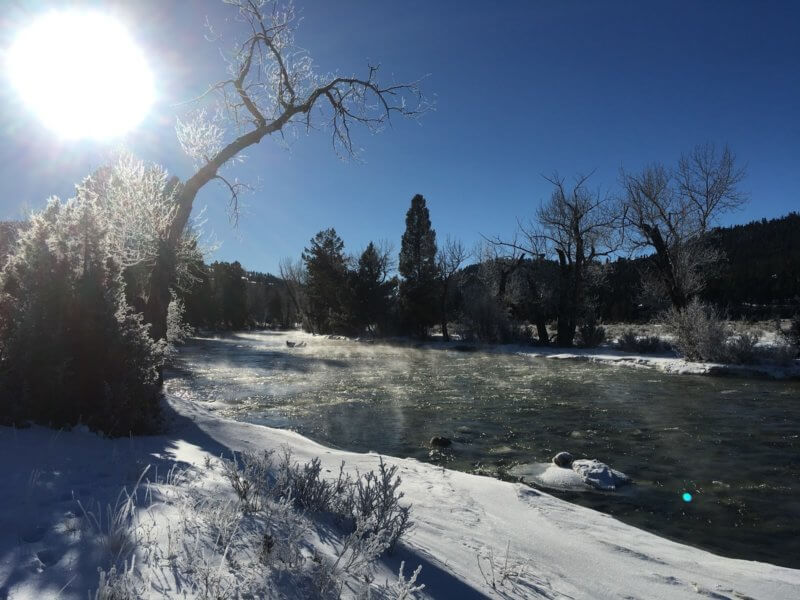by Heather McKee, Wings Over Water Program Assistant
As part of National Geographic’s announcement of the Year of the Bird this year – a centennial celebration of the Migratory Bird Treaty Act of 1918 – I co-led a morning bird walk at the Ranch at Rock Creek in Philipsburg, with their naturalist, Kelsey. Although it was only 15 degrees out, and our grand tally of birds was a humble four (one Black-billed Magpie, one Rough-legged Hawk, and two Canada Geese), our group marveled at the crystalline beauty of the day. Stalks of grass resembled bouquets of rock candy, giant sparkling crystals stacked together. The sheet of snow glittered like a thousand-faced gem. And the sun was bright enough to make us believe spring might come back one day.
But it was still cold this day, and we kept warm by keeping moving. As we walked down to the creek to see if we could spy the spry American Dipper that the guests had seen the day before, a few guests stopped to try to capture the moment with their cameras. Kelsey and I admired the creek for a moment, and then Kelsey ruminated aloud: “Why is the bottom of the creek frozen, when the top isn’t?” I peered through the steam coming off the creek, and saw that although the top of the creek was clear and rushing, underneath was a rolling silvery-grey carpet of ice clinging to the rocks. I thought I remembered something about the water current at the bottom of the river being slower than at the top, but I wasn’t sure.

Photo by Heather McKee.
So I came back to the Montana Natural History Center and investigated. A hydrogeological engineer and graduate from Montana Tech University, Lica Milodragovich, addressed the question in the Montana Standard a few years back. She explained that this type of ice at the bottom of a body of water, called “anchor ice,” forms as a result of supercooling of the creek’s waters. Supercooling is when water becomes a tiny fraction of a degree colder than freezing, making ice crystal amalgamation imminent. But in the creek’s case, the speed and choppiness at the top of the flow of water can prevent the first crystals, called frazil, from sticking together. As they tumble around, the frazil instead begins to stick to the rocks in the slower-flowing water at the bottom of the creek, and so the process of anchor ice begins.
Although many stream invertebrates in Montana can survive the formation of anchor ice, it can hinder the animals who feed on those invertebrates. The anchor ice may well be the reason we didn’t see the Dipper that morning! Often anchor ice will lift throughout the day as the sun warms it, and be released downstream. So perhaps the Dipper just took the occasion to sleep in.












